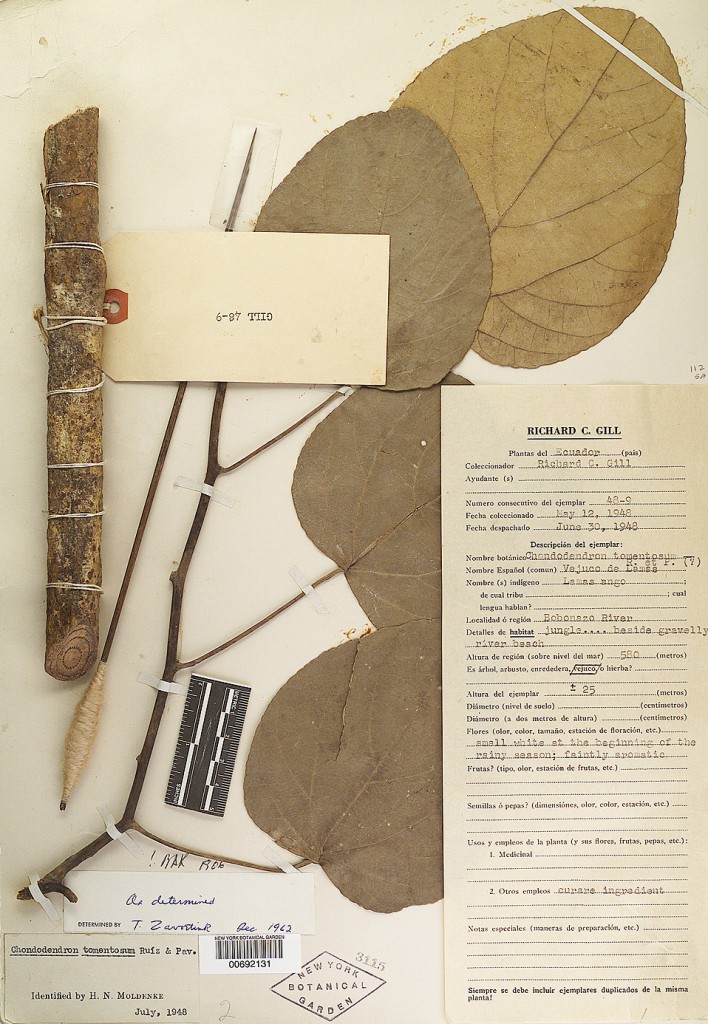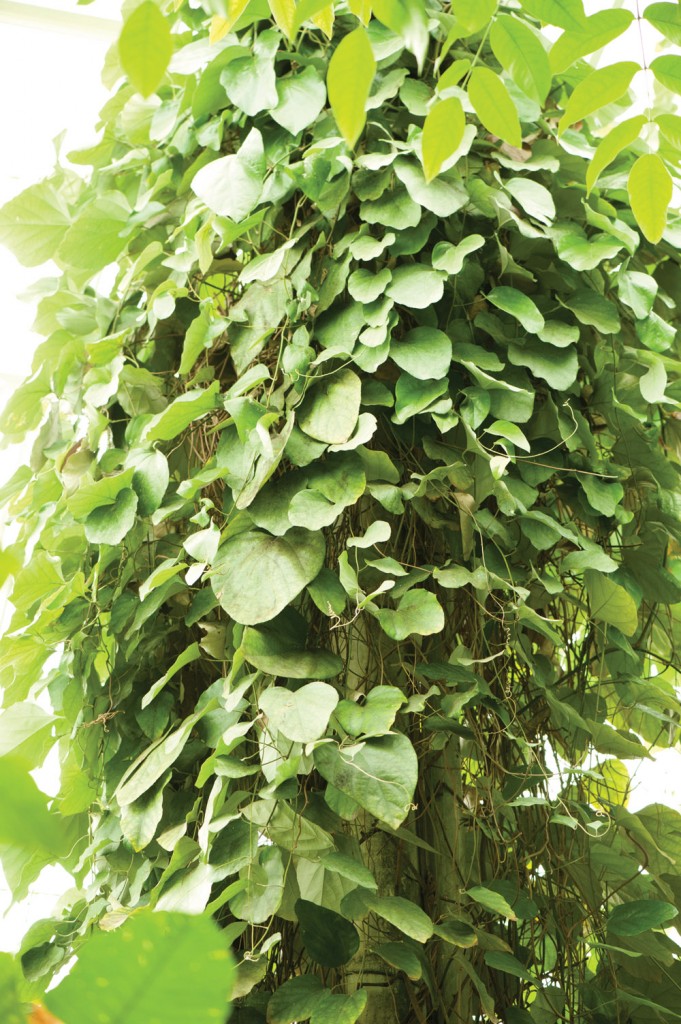Curare: From the Rain Forest to the Operating Room
Posted in Interesting Plant Stories on January 29, 2015 by Elizabeth Kiernan
Elizabeth Kiernan is a project coordinator for the William and Lynda Steere Herbarium at The New York Botanical Garden. She is currently working on a program to document the biodiversity of the Amazonian region of South America.

With 7.4 million specimens, the William and Lynda Steere Herbarium of The New York Botanical Garden is a repository of thousands of scientifically significant, historic, or interesting plant specimens collected from around the world. Among these are specimens of the plants that are used to make curare, or blow-dart poison, which were collected during an intensive investigation of the poison for medicinal use in the late 1930s. That research was the start in the chain of events that revolutionized medical anesthesia.
Curare is extracted from a mixture of varying botanical sources, including species of the Menispermaceae and Loganiaceae families. Indigenous tribes of the Amazon region and elsewhere around the Neotropics have been credited with formulating curare, which induces muscular paralysis upon entering the bloodstream but is not toxic when ingested, making it ideal for hunting. Peter Martyr d’Anghiera, who chronicled Spain’s discoveries during the Age of Exploration, first described the poison in 1516. In 1595, Sir Walter Raleigh of England met the tribesmen of the Amazon region and returned with preparations of the poisonous herbs known by the natives as “ourari,” which later evolved into “curare.”
Richard C. Gill is credited with facilitating the scientific study of curare. Gill, an American living in Ecuador, was an adventurer who had developed a neurological disorder involving painful spasms after an accident while riding a horse. His neurologist, Dr. Walter Freeman, suggested that Gill look into the arrow poisons of South American tribesmen to help alleviate his condition. Gill returned to Ecuador in search of curare samples for chemical and pharmacological research. He embarked on a four-month expedition in 1938 with the help of 75 Canelos Indians, travelling in the Pacayacu and Sarayacu regions of Ecuador.

Fortunately, Gill had established a rapport with the indigenous peoples, and they willingly bestowed the secrets of the forest upon him. Gill was able to observe the preparation of curare in several locations, learning the different “recipes” for the poison. The two species most credited in the production of curare are Chondrodendron tomentosum and C. iquitanum, large vines found in the canopy of the Amazon Basin. The most common method of producing curare involves mashing the plants and mixing them with water, then boiling and straining the mixture until it becomes thick and syrupy.
Gill sent botanical specimens of curare, which he collected, dried, and pressed, to botanist B. A. Krukoff at The New York Botanical Garden to be identified. That is how the specimens became part of the Steere Herbarium’s collection, where they remain in their well-preserved state today. In addition to gathering herbarium specimens, Gill was able to collect 25 pounds of crude curare preparation, which he provided to the pharmaceutical company E.R. Squibb & Sons. The company produced a sterile but impure form of the curare, branded Intocostrin, which was used for muscle relaxation.
Harold Griffith and Enid Johnson, anesthetists of Canada, obtained the drug and in 1942 injected it experimentally during an abdominal operation to relax the patient’s muscles, making surgery easier. Up to then, deep general anesthesia was the method of choice for invasive surgery, which was both dangerous and impractical. Their success with Intocostrin marked the beginning of using neuromuscular blocking agents during surgery. The blow-dart poison of the Amazon had found a new, life-saving use in the operating room.
To see curare vines growing in their rain forest habitat, visit Wild Medicine in the Tropics, the Botanical Garden’s new winter exhibition, on view in the Enid A. Haupt Conservatory until February 22. Curare, part of the Conservatory’s permanent collection of tropical and desert plants, is also featured on the free Wild Medicine iPhone app, available through the iTunes apps store.
For more information, see:
Bennett, A.E., 1968, The History of the Introduction of Curare Into Medicine, Anesthesia and Analgesia: Current Researches, Vol. 47, No. 5, pp. 484-492.
Krukoff, B.A. and Smith, A.C., 1939, Notes on the Botanical Components of Curare – II, Bulletin of the Torrey Botanical Club, Vol. 66, No. 5, pp. 305-314, http://www.jstor.org/stable/2480853.
Larson, Merlin. Richard C. Gill and the Introduction of Curare into Anesthesia Practice. Arthur E. Guedel Memorial Anesthesia Center, CSA Bulletin, pp. 47-50.


Very interesting to me! I’m 75 years old and want to find out if I could use this for muscle and nerve problems I am in constant pain from. Saw on I/E program about Amazon Rainforest travels.